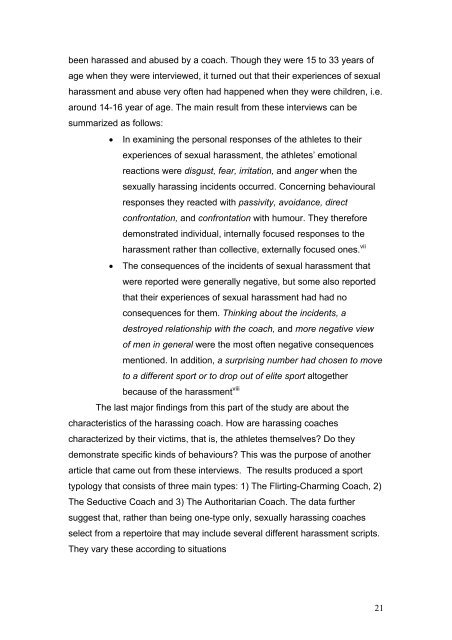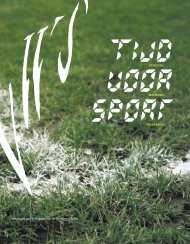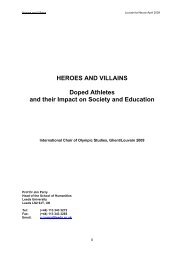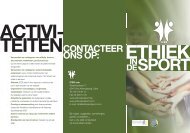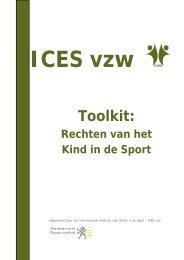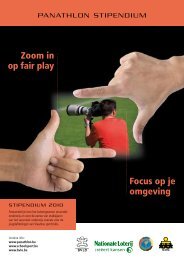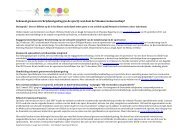Part 3 GLOBAL ISSUES: HARASSMENT AND ABUSE RESEARCH
Part 3 GLOBAL ISSUES: HARASSMENT AND ABUSE RESEARCH
Part 3 GLOBAL ISSUES: HARASSMENT AND ABUSE RESEARCH
Create successful ePaper yourself
Turn your PDF publications into a flip-book with our unique Google optimized e-Paper software.
een harassed and abused by a coach. Though they were 15 to 33 years of<br />
age when they were interviewed, it turned out that their experiences of sexual<br />
harassment and abuse very often had happened when they were children, i.e.<br />
around 14-16 year of age. The main result from these interviews can be<br />
summarized as follows:<br />
In examining the personal responses of the athletes to their<br />
experiences of sexual harassment, the athletes’ emotional<br />
reactions were disgust, fear, irritation, and anger when the<br />
sexually harassing incidents occurred. Concerning behavioural<br />
responses they reacted with passivity, avoidance, direct<br />
confrontation, and confrontation with humour. They therefore<br />
demonstrated individual, internally focused responses to the<br />
harassment rather than collective, externally focused ones. vii<br />
The consequences of the incidents of sexual harassment that<br />
were reported were generally negative, but some also reported<br />
that their experiences of sexual harassment had had no<br />
consequences for them. Thinking about the incidents, a<br />
destroyed relationship with the coach, and more negative view<br />
of men in general were the most often negative consequences<br />
mentioned. In addition, a surprising number had chosen to move<br />
to a different sport or to drop out of elite sport altogether<br />
because of the harassment viii<br />
The last major findings from this part of the study are about the<br />
characteristics of the harassing coach. How are harassing coaches<br />
characterized by their victims, that is, the athletes themselves? Do they<br />
demonstrate specific kinds of behaviours? This was the purpose of another<br />
article that came out from these interviews. The results produced a sport<br />
typology that consists of three main types: 1) The Flirting-Charming Coach, 2)<br />
The Seductive Coach and 3) The Authoritarian Coach. The data further<br />
suggest that, rather than being one-type only, sexually harassing coaches<br />
select from a repertoire that may include several different harassment scripts.<br />
They vary these according to situations<br />
21


